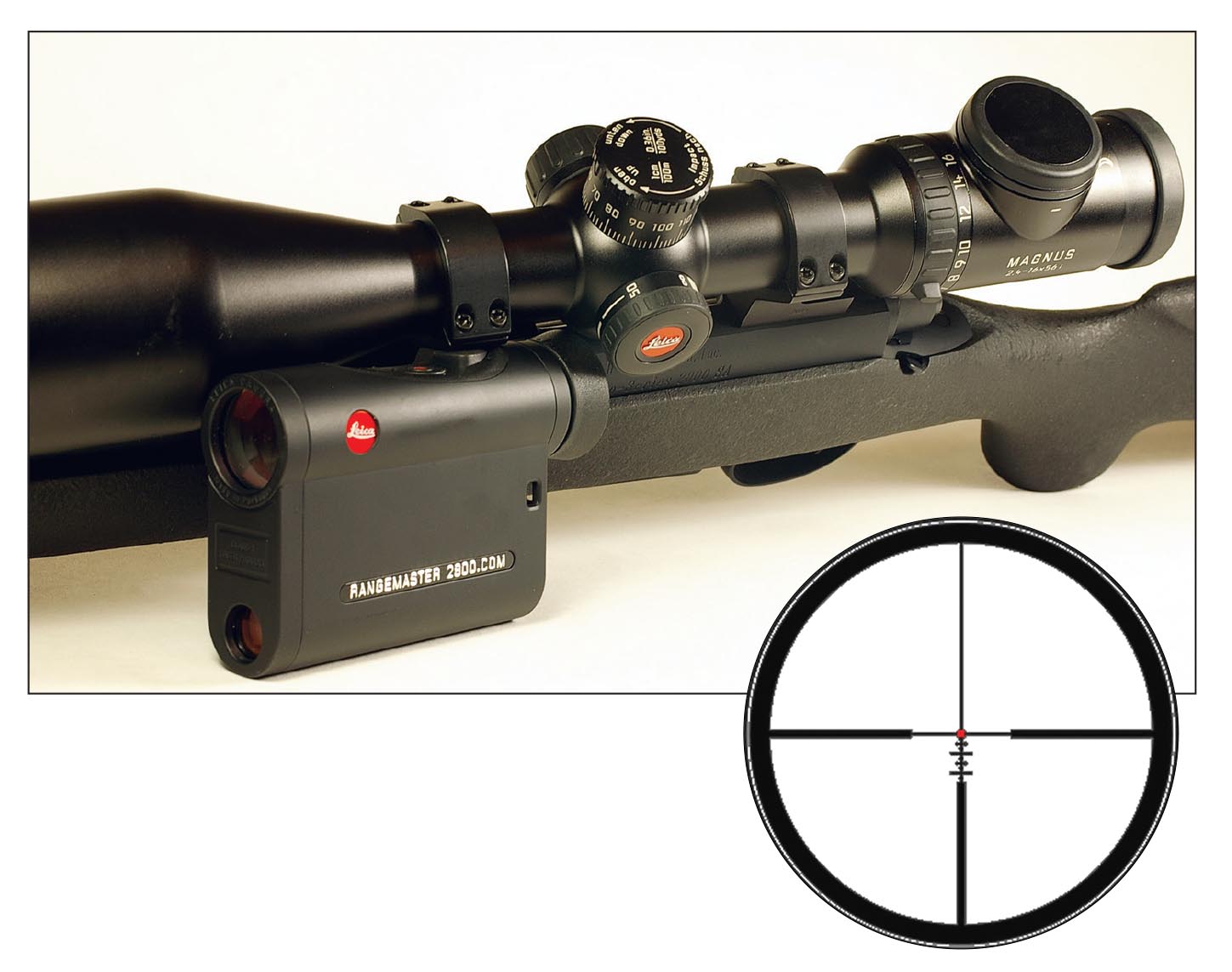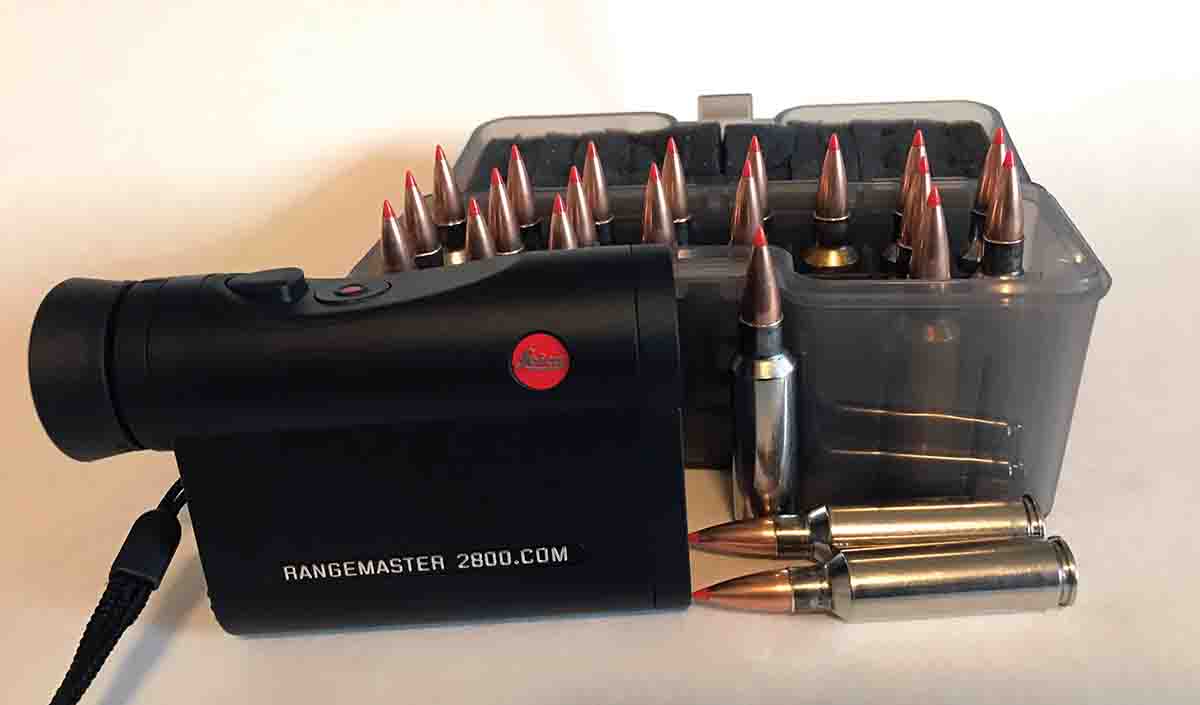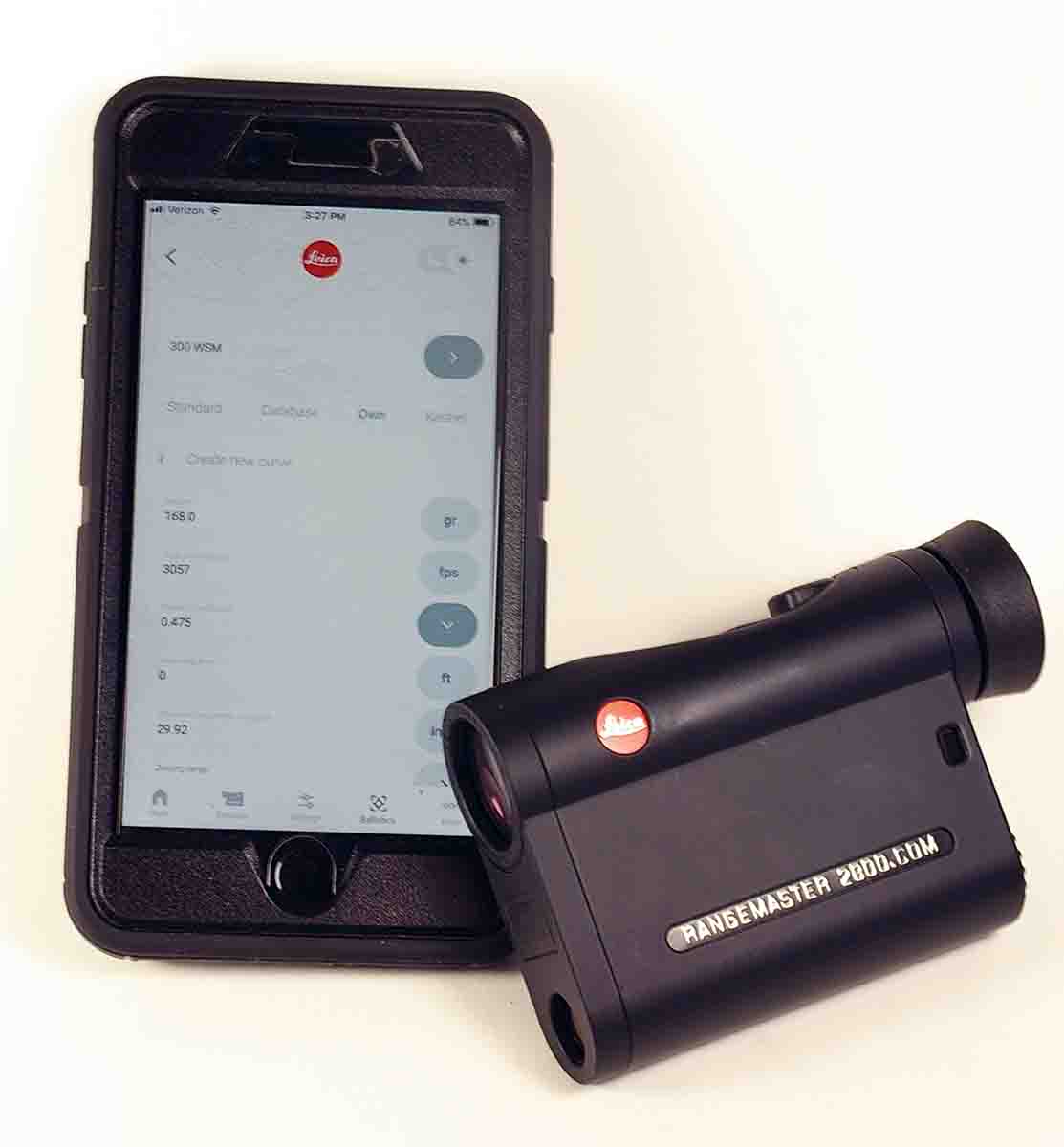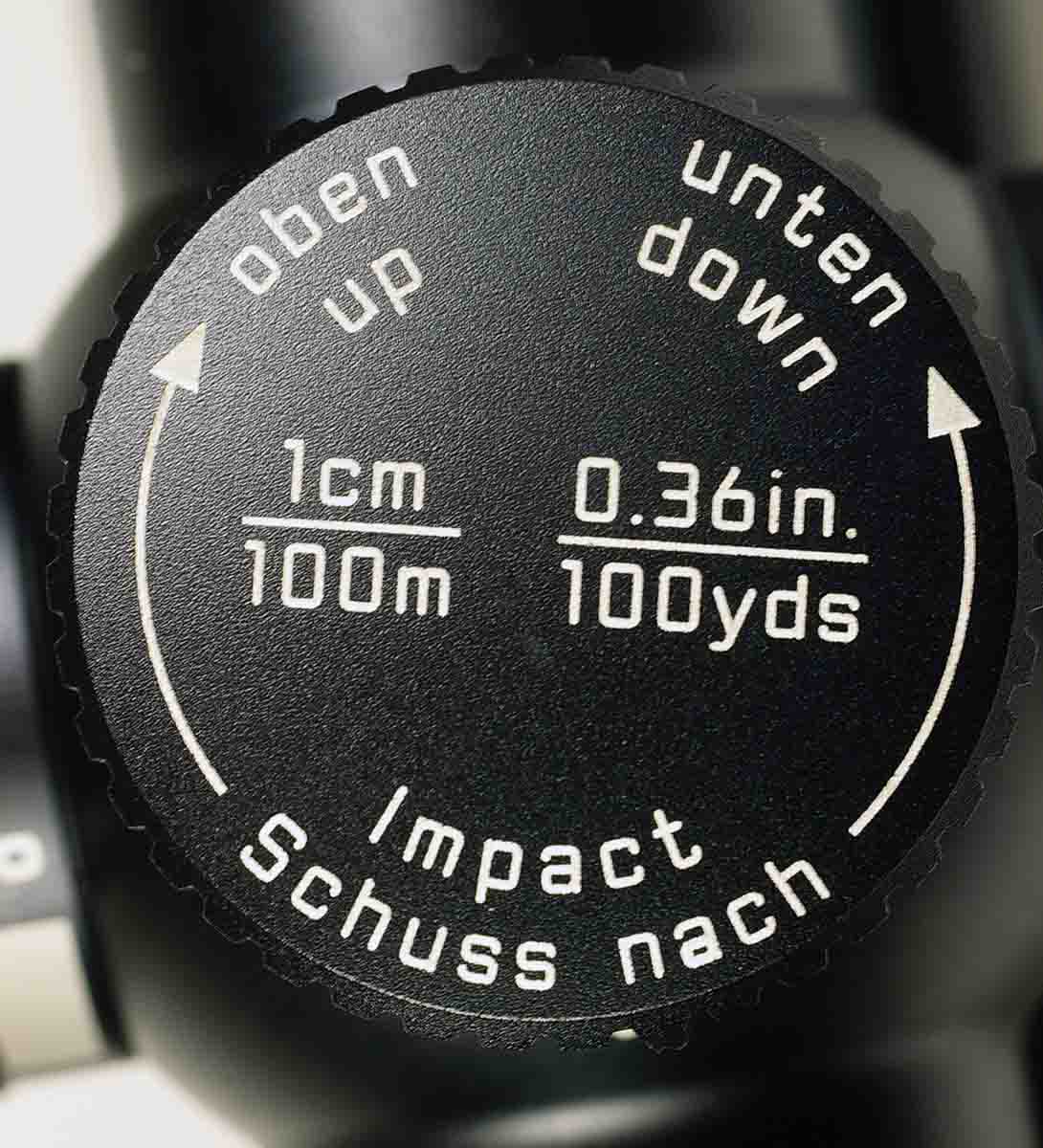A Rifleman's Optics
Leica Rangemaster CRF and Magnus Scope
column By: John Haviland | September, 19
Leica’s new Rangemaster CRF 2800.COM rangefinder fits in a shirt pocket with room to spare, and it weighs a slim 6.5 ounces so you barely know it’s there. In hand, a push of a button on the Rangemaster engages Leica’s Advanced Ballistic Compensation (ABC) program that calculates range and bullet drop based on environmental conditions and shot angle.

Of course, all manner of ballistic settings must be entered into the rangefinder before shooting. Information can be entered directly. Entering data straight into the Rangemaster was trying because unless I knew exactly which button to push, and how many times, the unit turned off after a few seconds of inactivity, and I had to start all over. It was much easier downloading the Leica Hunting app onto my smartphone, entering information in the app and transferring it via Bluetooth to the rangefinder.
There is a choice of metric or imperial units for the Rangemaster to measure distance, temperature and atmospheric pressure. One of 12 standard ballistic profiles can be entered, or you can choose one from a database of cartridges from the .204 Ruger to the .50 BMG, which are further divided into specific bullet weights and velocities offered by different companies. A customized ballistic curve can also be entered into the app and transferred to the Rangemaster. Bullet zero range can be set at 100, 200 or 300 yards.


After a range is taken and shows in the Rangemaster, its ABC program immediately displays either the equivalent horizontal range, holdover in inches or the number of clicks on a scope’s elevation turret required to compensate for bullet drop at that distance. Holdover clicks can be shown in one, 1⁄4 or 1⁄3 minute of angle, or 10mm or 5mm. Holdover offset is limited to 800 yards.
I started with holdover set in inches and shot the H-S Precision rifle out to 400 yards. However, each click on the elevation turret of the Leica Magnus 2.4-16x 56i scope equals .36 inch of reticle movement at 100 yards. When the inches of holdover appeared in the Rangemaster, a few moments were needed to figure out how many clicks were required to compensate for drop.
One click on the elevation turret on the Magnus scope also moves the reticle one centimeter at 100 meters, so I changed the settings to metric and switched holdover clicks to 10mm to match the scope’s elevation turret. Distances appeared in meters, and then the number of one-centimeter clicks required to compensate for bullet drop was provided.
Drop of the A-MAX bullet at 300 yards matched what the ballistic chart on the app and the Rangemaster stated. If it had not, I could have slightly lowered bullet velocity in the app to “virtually” reduce bullet drop.
I shot from 365 to 649 meters. Only a few seconds were required to take a distance reading with the Rangemaster, turn the turret, drop behind the scope and fire a shot. The farthest shots were at a two-foot square patch of bare and dry ground. The Rangemaster’s ballistics were right on the money, as puffs of dust churned up when the bullets hit.

Leica states the Rangemaster will read distances on large, highly reflective targets out to 2,800 yards, trees out to 1,640 yards and game at 540 yards. Range accuracy is within .5 percent over 875 yards. One evening I stood leaning against a post to support myself and braced the Rangemaster against the post with both hands. The sides of brown and white houses were easy to range at 1,000 yards. The side of a white house at 2,015 yards was the farthest reading I obtained. It took several attempts to acquire, as pushing the ranging button moved the rangefinder. A deer at 446 yards also took a few attempts to range, because it kept moving. A screw thread on the Rangemaster that would allow it to be attached to a tripod would help keep it steady.
The scope’s tall elevation turret made for dialing gives a “touch of tactical” to the Leica 2.4-16x 56i scope. The Magnus, though, is intended as a hunting scope. In German tradition, it features a 56mm objective lens. Leica states 91 percent of light entering the scope reaches the eye. Even set at 16x, its exit pupil is 3.5mm, which is about as wide as the average eye dilates. The view through the scope was simply brilliant. Looking at a U.S. Air Force resolution test chart at 100 yards, the Magnus resolved three finer sets of elements compared to two 4-16x 44mm scopes made in Asia. The view remained sharp to the outside edges.
The Magnus test scope came with the L-Ballistic Reticle located in the second focal plane.
At 100 yards with magnification turned all the way up, the reticle has 4.9-inch spacing between hash marks on the lower vertical wire. However, there are no hash marks on the horizontal wire to aid in compensating for wind. That’s the scope’s only negative.
As evening thunderclouds darkened the sky and light rain began to fall, I looked across sagebrush foothills with the 7x24mm Rangemaster, and its view was fairly bright – it would work in a pinch as a monocular. The view through the Magnus was clear, even in the shadows of the sagebrush. The scope and rangefinder made a perfect hunting pair.
Leica does not list prices for its Magnus or Rangemaster. Several Internet sites list prices of about $2,900 for the scope and $1,100 for the Rangemaster.


